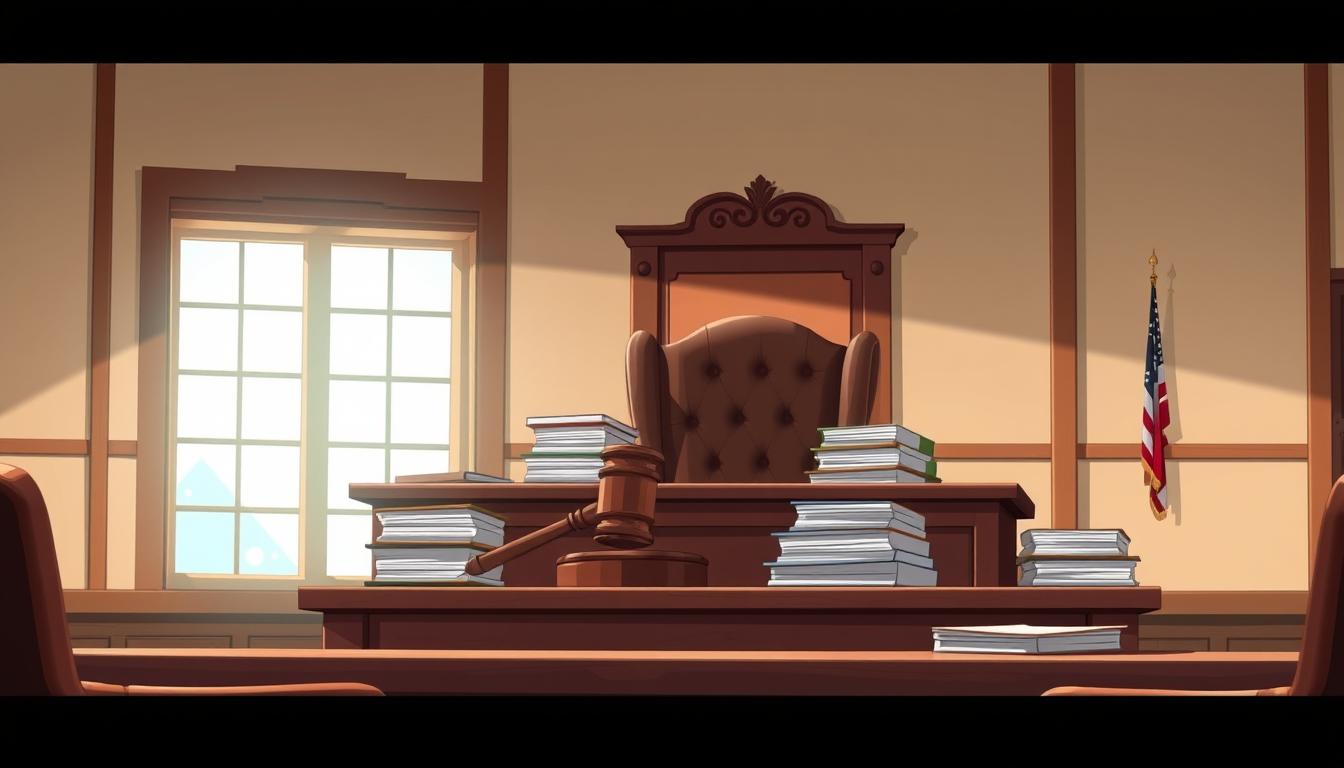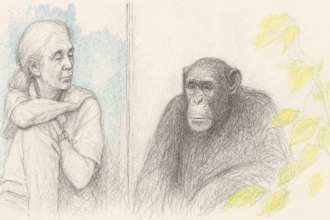
After 24 days of gripping testimony, the prosecution is set to wrap up its arguments in the high-profile trial. The courtroom drama has been anything but dull, with twists and turns keeping everyone on edge.
One of the most talked-about moments involved a juror dismissed over false residency claims—switching between the Bronx and New Jersey. It’s the kind of detail that feels straight out of a legal thriller.
The defense is gearing up for a swift rebuttal, predicting just two days to present their side. Meanwhile, Kanye West’s surprise appearance at the courthouse added a dash of celebrity intrigue, showing support in a case that’s captivated the nation.
With the case nearing its conclusion, all eyes are on the potential verdict, which could come as early as next week. Stay tuned—this story is far from over.
Introduction to the Sean «Diddy» Combs Trial
The high-profile trial has gripped the nation with its intense legal drama. Charged with sex trafficking and racketeering under federal law, the case has become a focal point of media attention. The indictment, issued in September 2024, followed raids in March of the same year, marking a significant turn in the investigation.
Overview of the Charges
The charges include violations of the Racketeer Influenced and Corrupt Organizations (RICO) Act, which carries a minimum sentence of 20 years. The prosecution alleges a pattern of illegal activities, including coercion and exploitation. Among the accusers is Cassie Ventura, the defendant’s ex-girlfriend, who settled a related lawsuit in 2023.
Key Players in the Trial
Judge Arun Subramanian is presiding over the case, ensuring a fair and impartial process. Leading the defense is Marc Agnifilo, a seasoned attorney known for handling high-stakes trials. Homeland Security has played a crucial role in gathering evidence, which has been pivotal in shaping the prosecution’s case.
The trial is taking place at the federal courthouse in New York City, a location that adds to the case’s prominence. With the prosecution nearing its conclusion, the courtroom remains a hub of legal and emotional intensity.
| Key Figure | Role |
| Judge Arun Subramanian | Presiding Judge |
| Marc Agnifilo | Lead Defense Attorney |
| Cassie Ventura | Accuser |
| Homeland Security | Evidence Collection |
Current Status of the Trial
The courtroom has been a whirlwind of drama as the prosecution prepares to rest its case. After weeks of gripping testimony, the prosecutors are set to conclude their arguments tomorrow. Over 300 documents, texts, and four explicit videos have been presented, painting a vivid picture of the allegations.
Prosecution’s Final Arguments
The prosecution’s case hinges on compelling evidence, including video footage of coordinated events. These recordings, described as freak-offs,have been central to their argument. Additionally, text messages and financial records have been used to build a narrative of exploitation and coercion.
One of the most shocking moments involved the dismissal of Juror #6, who lied about her residency. This twist added another layer of intrigue to an already sensational trial.
Defense’s Counterarguments
The defense has fired back with claims of entrapment, arguing that the accusers are driven by financial motives. They’ve labeled the allegations as a product of «gold-digging,» aiming to discredit the prosecution’s narrative.
With only two days allocated for their rebuttal, the defense is expected to move swiftly. Their strategy focuses on dismantling the credibility of the accusers and highlighting inconsistencies in the evidence.
- Video evidence of coordinated events has been a focal point.
- The defense argues that accusers are financially motivated.
- Juror #6 was dismissed for residency deception.
- Two to three witnesses are expected to testify next.
- The defense’s rebuttal phase will be rapid and intense.
As the case enters its final stages, all eyes are on the courtroom. The verdict could come as early as next week, marking the end of a legal saga that has captivated the nation.
Key Testimonies in the Trial
The trial has reached a pivotal moment as key testimonies take center stage. These accounts have added emotional depth and complexity to the case, revealing shocking details that have left the courtroom in silence.
Ex-Girlfriend’s Emotional Testimony
One of the most gripping moments came from the defendant’s ex-girlfriend, referred to as Jane. In a tearful testimony, she described being coerced into drug-fueled orgies at various hotels. Her account painted a harrowing picture of manipulation and exploitation.
ane also revealed that she learned about other victims through Cassie Ventura’s lawsuit. This revelation added another layer of gravity to her story, highlighting the broader impact of the allegations.
Former Basketball Player’s Account
Another key witness was a former Syracuse basketball player. He testified about the defendant’s «creative» cocaine use patterns, offering a glimpse into the lifestyle surrounding the accused. His observations included details about methamphetamine use, further complicating the narrative.
The defense challenged the credibility of both testimonies, arguing that the accusers were financially motivated. They labeled the allegations as a product of «gold-digging,» aiming to discredit the prosecution’s case.
The courtroom atmosphere grew tense when an unidentified woman disrupted proceedings with a scream. This unexpected moment added to the drama, underscoring the emotional weight of the trial.
- Jane’s tearful account of hotel «freak-offs» was a focal point.
- The former basketball player detailed drug use patterns.
- Jane learned about other victims through Cassie’s lawsuit.
- An unidentified woman disrupted the courtroom with a scream.
- The defense questioned the credibility of the testimonies.
| Witness | Key Details |
| Jane (Ex-Girlfriend) | Coerced into drug-fueled orgies, learned about other victims through Cassie’s lawsuit. |
| Former Basketball Player | Testified about cocaine and methamphetamine use patterns. |
Legal Analyst’s Perspective
Legal experts are weighing in on the trial’s twists and turns, offering insights into the prosecution’s strategy and the defense’s counterarguments. MSNBC’s Danny Cevallos has highlighted the strengths and weaknesses of the case, noting damning video evidence but questioning witness credibility.
Strengths and Weaknesses of the Prosecution’s Case
The prosecution’s case relies heavily on video footage and a paper trail of text messages. These pieces of evidence are compelling but face challenges in admissibility, especially for decade-old allegations. The defense is likely to argue that the accusers are financially motivated, which could weaken the prosecution’s narrative.
Another factor is the defendant’s 1990s «Bad Boy» reputation. While it adds context, it may also be seen as prejudicial. The prosecution must balance presenting this history without alienating the jury.
Potential Legal Strategies of the Defense
The defense is expected to focus on creating reasonable doubt. They’ll likely emphasize the lack of physical proof and challenge the credibility of the accusers. Additionally, they may file motions for a mistrial, citing issues like the dismissed juror’s deception.
Another strategy could involve discrediting the prosecution’s evidence as circumstantial. By highlighting inconsistencies, the defense aims to shift the jury’s focus away from the allegations.
| Strategy | Details |
| Reasonable Doubt | Focus on lack of physical evidence and witness credibility. |
| Mistrial Motions | Argue juror issues or procedural errors. |
| Discrediting Evidence | Highlight inconsistencies in the prosecution’s case. |
Public Reaction to the Trial
The trial has sparked widespread debate across the media and the world. From social media trends to newsroom discussions, the case has become a cultural touchstone. Complex Networks reports a staggering 63% negative social sentiment, reflecting the public’s divided views.
Media Coverage and Public Opinion
Outlets like TMZ have leaned into sensationalism, while Law&Crime offers a more analytical take. The #DiddyTrial hashtag has trended globally, with millions of tweets and posts. Fans are split, with heated debates flooding the comments section of the accused’s Instagram.
Interestingly, many industry peers have stayed silent, avoiding public statements. This silence speaks volumes, hinting at the case’s sensitivity. Meanwhile, the media frenzy shows no signs of slowing down.
Celebrity Support for the Accused
Kanye West’s surprise appearance at the courthouse marked the first show of celebrity news support. His presence added a layer of intrigue, though his motives remain unclear. Was it solidarity, curiosity, or something else?
As a fellow music mogul, West’s involvement has fueled speculation. His appearance underscores the trial’s impact on the entertainment industry. Whether it helps or hinders the accused’s case is yet to be seen.
- TMZ’s sensational coverage contrasts with Law&Crime’s analysis.
- The #DiddyTrial hashtag has dominated social media trends.
- Fan division is evident in Instagram comments.
- Industry peers are largely avoiding public statements.
- Kanye West’s appearance has sparked widespread speculation.
Jury Dynamics and Challenges
The jury’s role in this trial has been anything but straightforward, with unexpected twists adding to the courtroom drama. From juror dismissals to strict warnings, the jury has faced its share of challenges. These developments have kept the trial unpredictable and intense.
Juror Dismissal and Its Impact
One of the most notable moments came with the dismissal of Juror #6. The man from the Bronx was removed after discrepancies about his residency came to light. It was revealed that he had listed his girlfriend’s address in New Jersey, conflicting with his claimed Bronx residence.
The defense objected to the dismissal, but their argument was overruled. Juror #6 was replaced by Alternate #15, a 57-year-old accountant from Westchester. This change has raised questions about how it might influence the jury’s deliberations.
Judge’s Warnings to the Jury
The judge has taken a firm stance to ensure a fair trial. During the proceedings, he issued a strict «media blackout» instruction, warning jurors against researching the case online. Violations could result in contempt charges, emphasizing the seriousness of the matter.
These warnings highlight the complexities of managing a high-profile trial. The jury’s ethnic composition—four Black, three Hispanic, and five White members—adds another layer of diversity to the deliberations.
- Juror #6 was dismissed for a residency discrepancy involving New Jersey.
- The defense’s objection to the dismissal was unsuccessful.
- Alternate #15, a Westchester accountant, replaced the dismissed juror.
- The judge warned jurors against researching the case online.
- The jury’s diverse composition includes members from various ethnic backgrounds.
As the trial progresses, the jury’s dynamics remain a focal point. Their ability to navigate these challenges will play a crucial role in determining the outcome of this high-stakes case.
Expert Opinions on the Trial
As the trial enters its final stages, experts are weighing in with their perspectives. From legal predictions to psychological insights, their analyses shed light on the complexities of the case.
Legal Experts‘ Predictions
A Fordham Law professor has predicted a 60% conviction probability, citing the strength of the prosecution’s evidence. Meanwhile, an NYU legal scholar has provided a detailed interpretation of the RICO statute, emphasizing its role in the case.
The defense’s focus on creating reasonable doubt has been noted, but experts believe the prosecution’s video evidence could be a game-changer. Appellate arguments are expected regardless of the verdict, adding another layer of complexity to the proceedings.
Psychological Analysis of Key Testimonies
Trauma experts have validated Jane’s PTSD symptoms, lending credibility to her emotional testimony. The psychological dynamics of power and control in accuser relationships have also been analyzed, with comparisons to cult leader tactics.
Jury reactions to graphic content have been closely observed. Nonverbal cues, such as body language and facial expressions, suggest the jury is deeply affected by the testimonies. This could influence their final decision.
- Fordham Law professor predicts a 60% conviction probability.
- NYU scholar interprets the RICO statute’s application.
- Trauma experts validate Jane’s PTSD symptoms.
- Power dynamics in accuser relationships are analyzed.
- Jury’s nonverbal reactions hint at their emotional engagement.
Potential Outcomes of the Trial

The trial’s conclusion looms, bringing with it questions about its lasting effects. As the jury prepares to deliberate, the possible verdict and its implications are at the forefront of everyone’s minds. A conviction under the RICO Act could result in a minimum sentence of 20 years, along with significant asset forfeiture risks. On the other hand, an acquittal would mark a dramatic turn in this high-stakes legal battle.
Possible Verdicts and Their Implications
If found guilty, the defendant faces severe penalties, including the potential loss of key assets. The prosecution’s case hinges on evidence like video footage and financial records, which could lead to a conviction. However, the defense’s argument of financial motives among accusers might create reasonable doubt.
An acquittal would be a significant victory, but the damage to the defendant’s reputation may already be irreversible. The trial has already impacted his business ventures, with Bad Boy Records’ valuation dropping by 80% since 2022 and Revolt TV severing ties in March 2025.
Long-Term Impact on Career
The trial’s long-term impact on the defendant’s career is undeniable. Streaming numbers for hits like «I’ll Be Missing You» have seen fluctuations, reflecting public sentiment. The music industry is watching closely, as the outcome could influence future collaborations and partnerships.
Documentary deals and biopic rights are already being speculated upon, with trial footage likely to fuel public interest. The defendant’s future in the entertainment world remains uncertain, but one thing is clear: this trial will leave a lasting mark.
- Sentencing guidelines for RICO convictions include a minimum of 20 years.
- Asset forfeiture risks could dismantle the defendant’s empire.
- Streaming numbers for iconic tracks have fluctuated post-trial.
- Documentary deals are expected to capitalize on trial footage.
- Biopic rights are likely to spark a bidding war.
Sean «Diddy» Combs‘ Legal Team’s Strategy
With 38 pretrial motions filed, the legal team is leaving no stone unturned. Their approach has been both aggressive and calculated, aiming to dismantle the prosecution’s narrative piece by piece. The defense is focusing on creating reasonable doubt, challenging the credibility of the accusers and the evidence presented.
Defense’s Approach to the Case
The defense has emphasized the lack of DNA evidence and questioned the financial settlements made by the accusers. They’ve argued that these settlements suggest a motive driven by money rather than justice. Additionally, the team has scrutinized the chain of custody for evidence collected by Homeland Security, pointing out potential inconsistencies.
One of their key strategies is to challenge the concept of «trauma bonding» presented in testimonies. By questioning the psychological validity of these claims, the defense aims to weaken the prosecution’s emotional appeal to the jury.
Key Arguments Presented by the Defense
The defense has highlighted the absence of drug test results, arguing that this undermines claims of coercion through substance use. They’ve also raised questions about the statute of limitations, suggesting that some allegations may be too old to prosecute effectively.
Another significant point is the budget allocated for private investigators, which exceeds $2 million. This investment underscores the defense’s commitment to uncovering every detail that could sway the case in their favor.
- Challenged the credibility of «trauma bonding» testimonies.
- Highlighted the lack of DNA and drug test results.
- Raised concerns about the statute of limitations.
- Invested over $2 million in private investigations.
- Scrutinized Homeland Security’s evidence chain.
As the trial progresses, the defense’s strategy remains a focal point in the court. Their ability to create reasonable doubt could be the key to the outcome of this high-stakes case.
Prosecution’s Case Against Sean «Diddy» Combs
From flight logs to encrypted messages, the prosecution’s evidence paints a vivid picture. Their strategy hinges on a mix of digital and physical proof, aiming to build a compelling narrative around the allegations.
Key Evidence Presented
Exhibit 22B, which includes flight logs to Epstein’s island, has been a focal point. These logs suggest connections that the prosecution argues are central to the case. Additionally, Cassie Ventura’s unredacted diary has been entered as evidence, offering personal insights into the allegations.
Encrypted Signal messages discussing «party favors» have also been analyzed. These messages, along with hotel security footage, provide a timeline of events. Forensic accounting has revealed alleged payments, while burner phone extraction data adds another layer to the prosecution’s argument.
Witness Testimonies and Their Impact
The emotional breakdown of «Jane» during her testimony left the courtroom in silence. Her account of coercion and exploitation has been pivotal in shaping the jury’s perception. Other witnesses have corroborated details, adding weight to the prosecution’s narrative.
The defense has challenged the credibility of these testimonies, but their emotional impact remains undeniable. The prosecution’s ability to present a cohesive story through both evidence and witness accounts has been a key strength.
- Flight logs to Epstein’s island suggest significant connections.
- Ventura’s diary provides personal insights into the allegations.
- Encrypted Signal messages detail «party favors» and other activities.
- Hotel security footage offers a timeline of events.
- Forensic accounting reveals alleged payments tied to the case.
Media’s Role in the Trial
The media’s spotlight on the trial has shaped public perception in ways few could have predicted. From courtroom sketches to viral TikTok recaps, the coverage has been relentless. While cameras were banned, 12 sketch artists were allowed, capturing every dramatic moment for the world to see.
NBC New York’s Erica Byfield leads the press pool, ensuring a steady stream of updates. This rotation system keeps the reporting fresh but also raises questions about consistency. How does this affect the narrative being presented to the public?
Coverage and Its Influence on Public Perception
Outlets like CNN offer in-depth legal analysis, while TMZ leans into sensational headlines. This contrast highlights the divide between serious journalism and entertainment-driven coverage. As one legal analyst noted,
«The way a story is told can shape how it’s remembered.»
TikTok courtroom recaps have added a new dimension to the trial’s reach. These short, digestible clips make the case accessible but risk oversimplifying complex legal issues. The challenge of maintaining victim anonymity in the digital age further complicates matters.
Ethical Considerations in Reporting
The press faces a delicate balance between informing the public and respecting privacy. Victim-blaming in comment sections underscores the need for responsible reporting. Ethical considerations must guide every headline and story.
The judge’s decision to ban cameras but allow sketch artists reflects an attempt to control the narrative. This approach ensures transparency while protecting sensitive details. Yet, it also limits the public’s access to unfiltered information.
| Outlet | Style |
| CNN | Legal Analysis |
| TMZ | Sensational Headlines |
| TikTok | Courtroom Recaps |
As the trial continues, the media’s role remains pivotal. Its influence on public perception and the ethical challenges it faces will shape how this case is remembered for years to come.
Sean «Diddy» Combs‘ Public Statements

Public statements have played a significant role in shaping the narrative of this high-profile case. From social media posts to interviews, the defendant’s words outside the courtroom have drawn as much attention as the trial itself. These remarks have influenced public opinion and added another layer of complexity to the proceedings.
Analyzing Key Statements
The defendant’s 2023 apology video to Cassie Ventura was a pivotal moment. In it, he expressed regret but stopped short of admitting guilt. This video has been cited by both the prosecution and defense, each interpreting it differently. The prosecution argues it’s an acknowledgment of wrongdoing, while the defense claims it’s a gesture of goodwill.
Leaked jailhouse calls have also made headlines. These recordings, which surfaced in May 2025, reportedly include discussions about the case. The courtroom reaction was mixed, with some viewing them as evidence of manipulation and others as harmless conversations.
Impact on the Trial
The defense has filed a motion to limit character evidence, arguing that public statements should not influence the jury’s decision. They claim these remarks are taken out of context and could unfairly prejudice the case. The judge has yet to rule on this motion, but it underscores the tension between public perception and legal fairness.
Jury instructions about extrajudicial statements have been carefully crafted. The judge emphasized that only evidence presented in court should be considered. This directive aims to prevent jurors from being swayed by media coverage or public opinion.
| Key Statement | Impact |
| 2023 Apology Video | Cited by both sides as evidence |
| Leaked Jailhouse Calls | Mixed courtroom reactions |
| Defense Motion | Argues against character evidence |
| Jury Instructions | Focus on court-presented evidence |
As the trial nears its conclusion, speculation about a post-verdict press conference is growing. Will the defendant address the outcome directly, or will his legal team speak on his behalf? Whatever happens, these public statements will continue to shape the legacy of this case.
Historical Context of the Case
The case has deep roots in past legal battles, shaping its current trajectory. Over the years, the defendant has faced multiple legal challenges, each adding layers of complexity to this high-profile trial. From acquittals to settlements, these events have influenced public perception and legal strategies.
Previous Legal Issues
In 1999, the defendant was charged in a club shooting but was later acquitted. This case marked the beginning of a pattern of legal entanglements. In 2015, an assault arrest at UCLA led to a settlement, further complicating the defendant’s legal history. These incidents highlight a recurring theme of courtroom drama.
The 2001 gun possession trial ended in a hung jury, leaving questions unanswered. These past cases have resurfaced in the current trial, with both sides using them to support their arguments. The prosecution points to a pattern of behavior, while the defense argues these are isolated incidents.
Comparison to Other High-Profile Trials
This trial draws inevitable comparisons to other high-profile cases. The Cosby and Weinstein trials, for example, have set precedents for how such cases are handled. The evidence standards in this case are also being scrutinized, much like in the R. Kelly trial.
The #MeToo movement has influenced the prosecution’s strategy, emphasizing victim testimonies and emotional impact. In contrast, Jay-Z’s 1999 stabbing case ended differently, showcasing how outcomes can vary even in similar circumstances. These comparisons provide valuable context for understanding the current trial’s significance.
- The 1999 club shooting charges were acquitted, but the case remains controversial.
- 2015 UCLA assault arrest was settled out of court, adding to the defendant’s legal history.
- Comparisons to Cosby and Weinstein trials highlight similarities in legal strategies.
- The #MeToo era has shaped the prosecution’s approach to victim testimonies.
- Jay-Z’s 1999 case offers a contrasting outcome to the current trial.
Impact on the Music Industry
The ripple effects of this trial are reshaping the music industry in unexpected ways. From streaming numbers to industry practices, the case has left a lasting mark. Bad Boy catalog streams have dropped by 40%, reflecting the public’s shifting sentiment.
ASCAP’s decision to remove the defendant from its advisory board in June 2025 further underscores the impact. This move signals a broader reevaluation of industry standards and accountability.
Reactions from Industry Peers
The trial has sparked mixed reactions from industry peers. While some have remained silent, others have taken a stand. Universal Music Group shelved a planned biopic, and the Grammy Museum removed an exhibit tied to the defendant.
Hip-hop’s «cancel culture» debates have also intensified. Many are questioning how the industry handles allegations against influential figures. Sample clearance issues for Bad Boy tracks have added another layer of complexity, with some artists reconsidering collaborations.
Potential Changes in Industry Practices
The trial may lead to significant changes in how the industry operates. New artist protection clauses in contracts are being discussed, aiming to prevent exploitation. These clauses could redefine power dynamics in the music industry.
Streaming platforms are also under scrutiny. Calls for transparency in royalty payments and artist rights are growing louder. The trial has become a catalyst for conversations about fairness and accountability.
| Key Industry Reaction | Impact |
| Universal’s Shelved Biopic | Reflects shifting priorities in storytelling |
| Grammy Museum Exhibit Removal | Signals a reevaluation of legacy |
| Sample Clearance Issues | Complicates collaborations and licensing |
| New Artist Protection Clauses | Potential to redefine industry standards |
As the trial continues, its impact on the music industry will likely grow. From streaming numbers to contract clauses, the case is reshaping how the industry operates. These changes could set a precedent for years to come.
What’s Next for Sean «Diddy» Combs?
The courtroom drama may be winding down, but the aftermath is just beginning. As the trial concludes, the focus shifts to the future and the potential scenarios that could unfold. From pending civil suits to career decisions, the road ahead is anything but simple.
Possible Scenarios Post-Trial
Even after the verdict, the legal battles are far from over. Three accusers have filed civil suits, which could drag on for years. Additionally, an IRS audit covering taxes from 2018 to 2022 adds another layer of complexity. These legal battles could significantly impact both personal and professional life.
Rumors about a potential prison assignment at FCI Danbury have surfaced, though nothing is confirmed. Meanwhile, negotiations with a memoir ghostwriter suggest a possible pivot to storytelling. The Vatican’s recent revocation of a charity ambassador role further complicates the public image.
Future Legal Battles and Career Moves
The post-trial phase could bring significant changes. Offshore asset protection strategies are reportedly being explored, hinting at efforts to safeguard wealth. On the career front, streaming numbers for iconic tracks have fluctuated, reflecting the trial’s impact on public perception.
Industry peers are watching closely, as the outcome could influence collaborations and partnerships. Whether it’s a comeback or a quieter chapter, the career moves made in the coming months will be crucial.
- Pending civil suits from three accusers could extend legal challenges.
- IRS audit for 2018-2022 taxes adds financial scrutiny.
- Prison assignment rumors suggest FCI Danbury as a possibility.
- Memoir ghostwriter negotiations hint at a storytelling pivot.
- Offshore asset protection strategies are reportedly in the works.
Conclusion
As the courtroom drama nears its end, the trial’s historic significance becomes undeniable. The prosecution’s 24-day evidentiary marathon has painted a vivid picture, leaving an indelible mark on the legal and cultural landscape.
This case isn’t just about a verdict; it’s a reckoning for the «bad boy» personas that once dominated hip-hop. The impact of this trial extends beyond the courtroom, questioning the legacy of 1990s hip-hop capitalism and its enduring influence.
Looking to the future, rumors of a Netflix docuseries add another layer to this unfolding story. Whether it’s closure or controversy, this trial will shape how we remember an era—and the man at its center.











